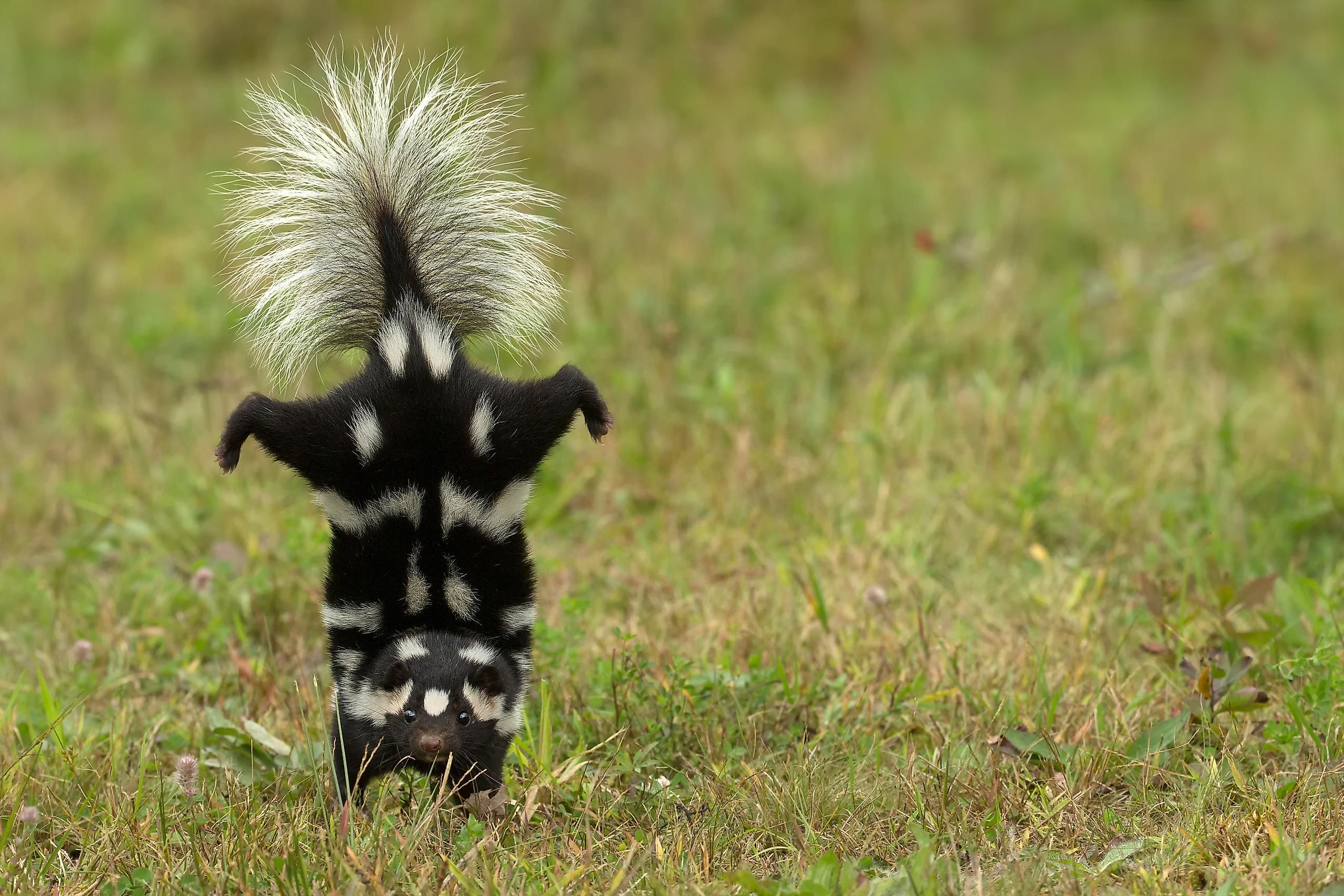
Animals Native To South Carolina
South Carolina is a hub for wildlife, including a rich diversity of reptiles and birds, as well as crustaceans and insect life. Despite the stunning local flora and fauna and the state's reputation for gorgeous natural landscapes, many species residing in the state are in danger of extinction. Here is a list of some notable species found in South Carolina. While not all the animals listed here are on the endangered list, a significant portion are.
Eastern Spotted Skunk
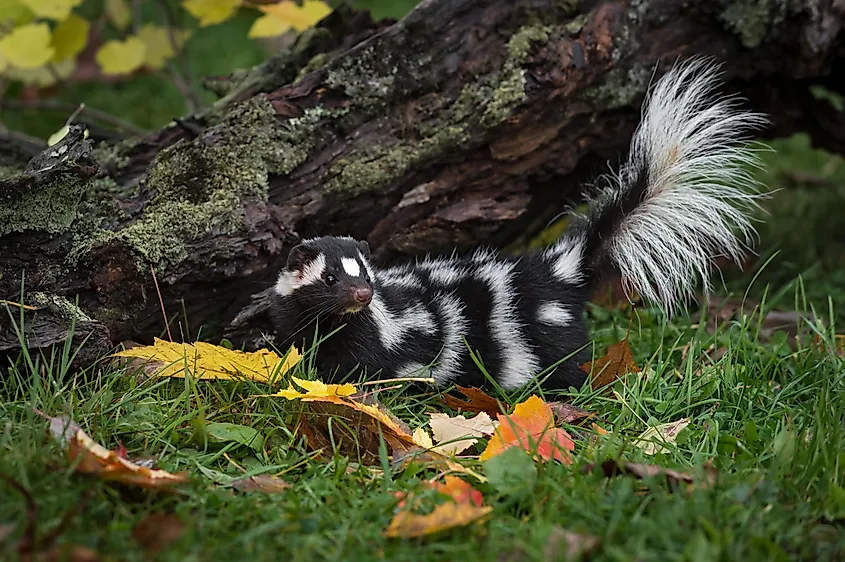
Commonly found around farms, skunks build their dens under buildings and in woodlands (under rock piles or tree roots) or abandoned fields. Spotted skunks, Spilogale putorius, differ from other skunks because they have 4 to 6 white stripes starting at the head and breaking up into spots near the rump, and they are smaller than striped skunks. Both species of skunks have claws for digging and strong scent glands for defense.
This particular species of skunk is native to South Carolina's highlands. Skunks are omnivores, feeding on a varied diet, including insects, eggs, frogs, fruits, grains supplements, and more. Baby skunks are born blind, as are many other types of mammals – especially rodents like rats and mice.
Saluda Burrowing Crayfish
Crustacean by taxonomy, the Saluda Burrowing Crayfish, Distocambarus hunteri, is currently on the "Critically Imperiled" section of the Endangered Species list, at least in South Carolina – this is the highest level of endangerment per the SWAP protocols. Native to South Carolina, this burrowing creature grows to 1.4 or 2.3 inches in length and lives in the Saluda River Basin in Saluda County. These crayfish prefer habitats with wet, sandy soils in or near rivers surrounded by forests with trees like red maple and American elm. The Saluda Burrowing Crayfish can make its home by digging burrows beneath the roots of trees along the riverbank.
Whooping Crane
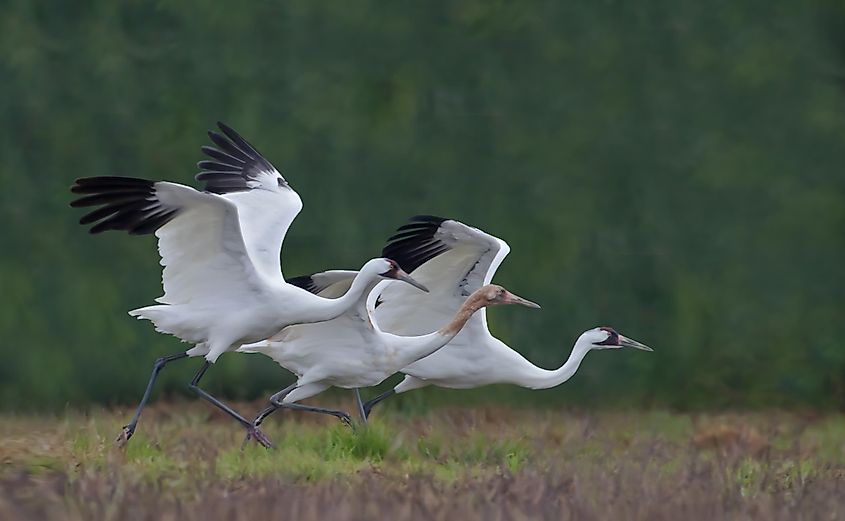
Grus americana, known colloquially as the Whooping Crane, is both an endangered creature in South Carolina and a migratory bird that travels between Texas in the Winter and Canada in the Summer. While this bird is one of the most rare in North America in general, it is also specifically on the "Critically Imperiled" list for preservation in South Carolina.
The Whooping Crane prefers warmer climates where it can find marshes and prairie pools, and they tend to breed in remote northern forests with bodies of water close at hand. These birds migrate during the day in family groups or small flocks. Just like human tourists, families tend to return to the same nesting spots each year. Nests are built by both parents with grass, weeds, and mud. Both parents also feed their young, who can fly independently about three months after hatching.
Black Bear
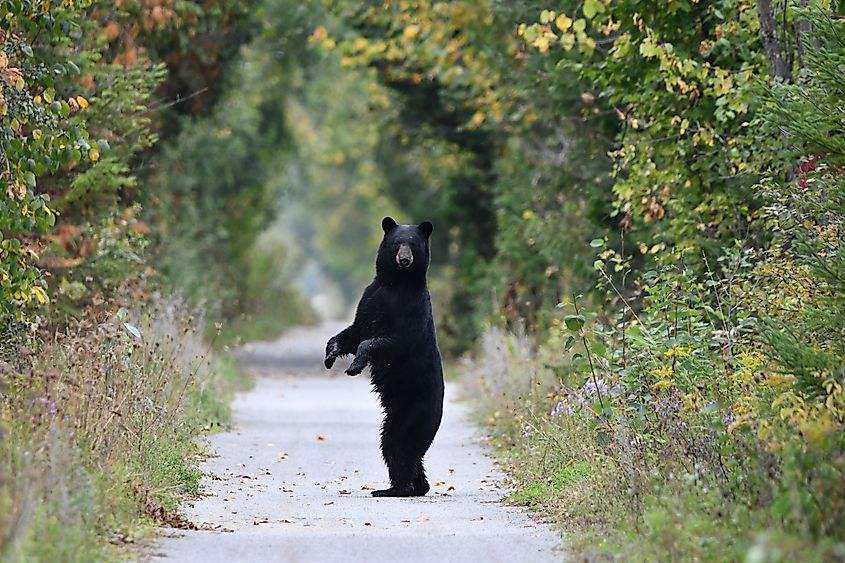
The largest land mammals in South Carolina are furry creatures you hear about more often than you probably see them, but Black Bears, Ursus americanus, do not possess the shoulder hump of the Grizzly or Brown Bear. Their eyesight and superb sense of smell are nearly as excellent as their climbing and swimming skills. Black bears prefer large stretches of forest with diverse vegetation, from blackberry bushes and trees to wetlands, but they can adapt to many habitats as long as they can find food and a safe place to make their den. These creatures are not currently endangered, as they can be found throughout North America and in South Carolina can be found in both the mountains and along the coastal plain.
Some bears travel between these regions in search of food, but they don't tend to stay long in these in-between lands. Speaking of which, bears are opportunistic and will eat whatever they can find, including garbage and seeds from bird feeders or outdoor pet food and crops, which has often led to amusing videos and some dangers closer to home. Take care to consider this possibility when setting out your bird feeders for the year or your garbage cans.
Robust Redhorse
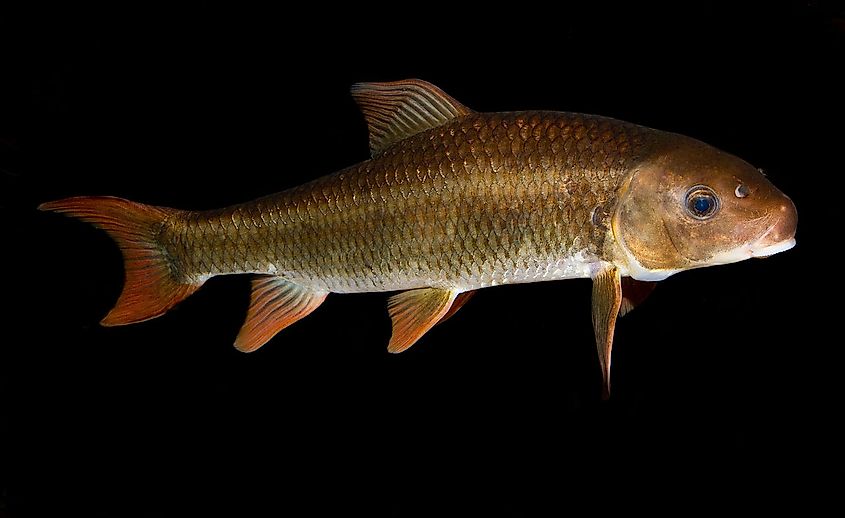
This freshwater fish is on South Carolina's "Critically Imperiled" list. The Robust Redhorse, Moxostoma robustum, is a member of the sucker family, which means that its mouth is at the bottom of its body to ingest animals that live on the bed of large rivers, such as mollusks and clams. They need gravel bars for reproduction, and in South Carolina, the bodies of water home to the Robust Redhorse include The Savannah River, the Santee Drainage, and the Pee Dee River. These fish only spawn in water temperatures around 70 degrees Fahrenheit and where gravel bars exist because these bars have fast-flowing water that filters through the gravel providing oxygen for their eggs to develop. One of the reasons this fish species is endangered may include dam construction in the middle of Redhorse migration courses.
Bog Turtle
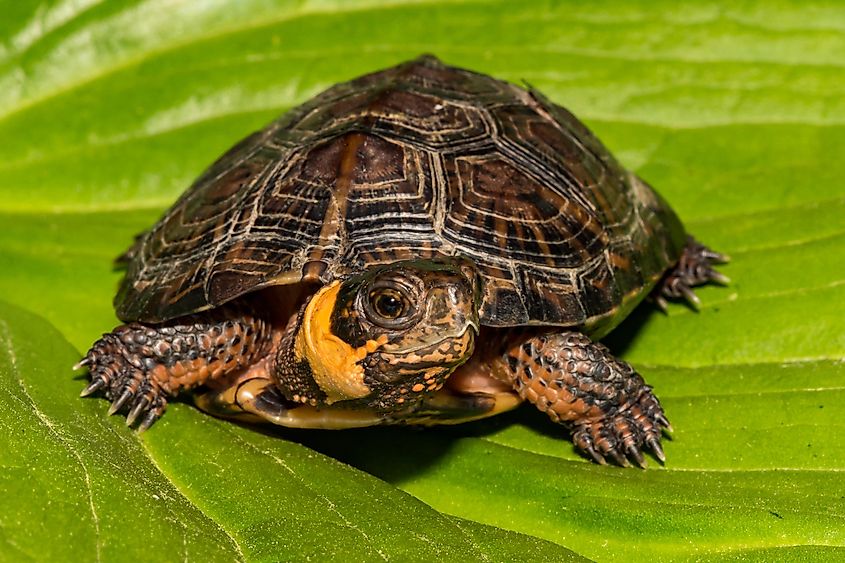
Turtles are a type of reptile, though they are unique in having a shell covering their bodies. The Bog Turtle, Glyptemys muhlenbergii, is "Imperiled" in South Carolina – the second highest endangerment level according to the SWAP protocols. Turtles make their homes in the ocean, freshwater lakes and rivers, dry sandhills, and forests throughout South Carolina.
The Bog Turtle is the smallest North American turtle and is usually 4 inches or less in size (about the size of an adult human's palm). They tend to have a brown or black shell and orange or yellow patches on their head and neck and eat insects and seeds. Outside of South Carolina, they can be found throughout the Appalachian and Blue Ridge Mountains. They prefer shallow and muddy bodies of water, which is why they are known as the "bog" turtle. Their natural wetland habitats are being drained and developed in many areas, leading to the inclusion of the species on endangered species lists.
Southern Fox Squirrel
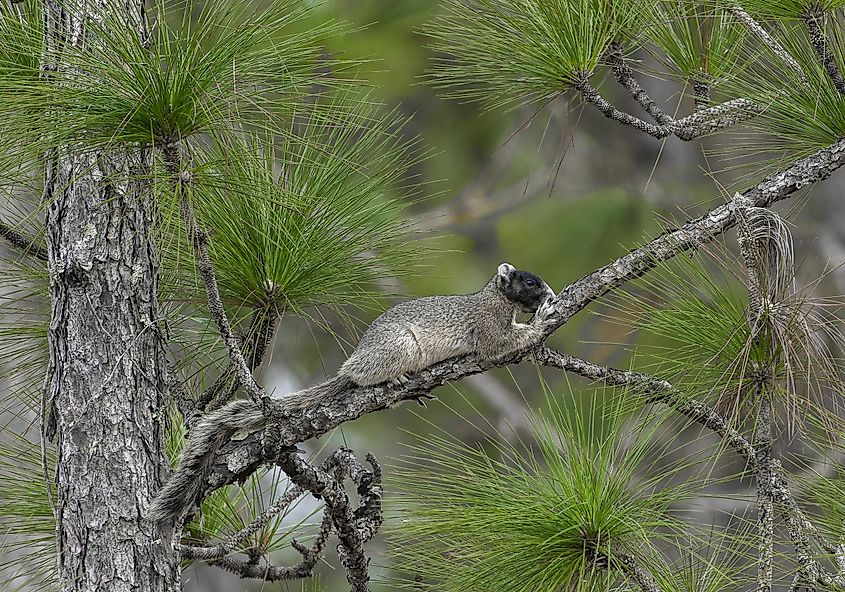
Sciurus niger niger, the Southern Fox Squirrel, is a species of tree squirrel found in woodland habitats with pine trees and shrubs and forests with live oak. These small creatures – actually almost twice the size of their gray squirrel cousins - will also search agricultural fields for food or live in parks and golf courses if they are near a section of their preferred habitat. In South Carolina, the fox squirrels tend to be found in the Coastal Plain region, while smaller populations can occasionally be found in the Piedmont and Blue Ridge mountain regions. Distinguishable from their gray squirrel cousins by the black coloration around their eyes and white patches on their noses, paws, and ears, the Southern Fox Squirrel can have mainly gray, black, or brown fur.
Patch-nosed Salamander
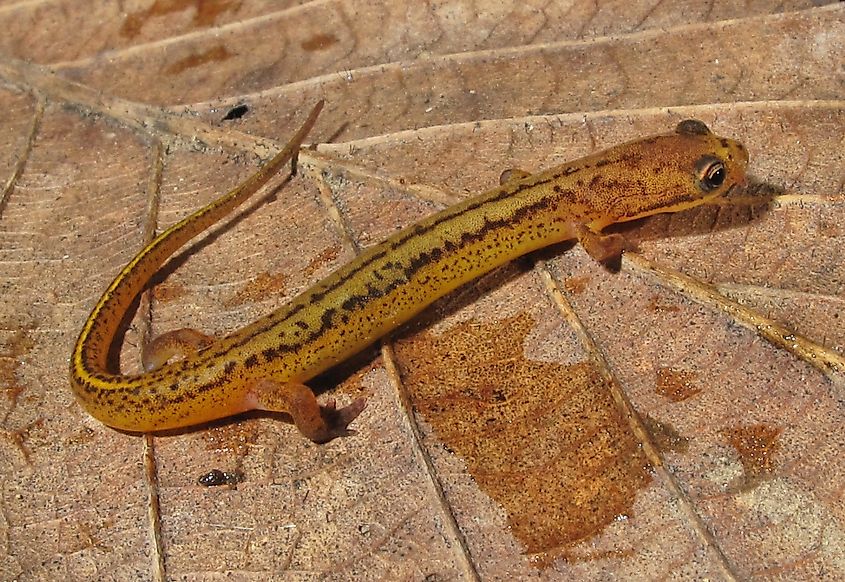
Amphibian is the category to which the "Critically Imperiled" Patch-nosed Salamander, Urspelerpes brucei, belongs. Salamanders often live beneath the ground or hidden under leaves and inside logs or in bodies of water. While in shape they can resemble lizards, salamanders have moist skin rather than scales. This particular salamander species inhabits a very small portion of South Carolina, where the Tugaloo River bisects the Blue Ridge and Piedmont Mountains, a region known as the Tugaloo Mosaic. The vegetation here is also varied more than in similar regions through either mountain range. The Patch-nosed Salamander lives only in first and second-order streams that flow through ravines with steep walls and is only home to one such stream in South Carolina (the rest being local to Georgia). These populations are so small already that it is important to conserve the natural habitats of the Patch-nosed Salamander.
Big Brown Bat
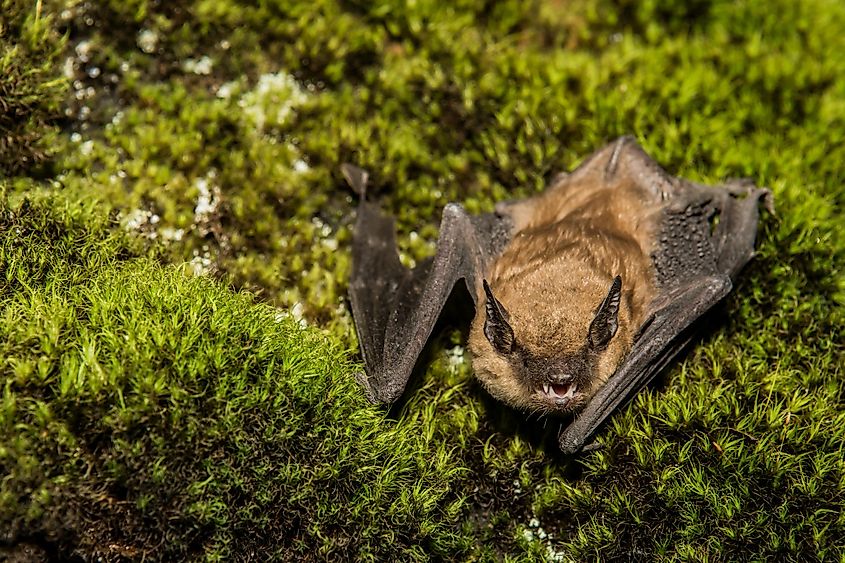
Bats are integral to South Carolinian society. Due to their insect diet, they economically assist the state's agricultural economy by reducing crop and forest pests and, therefore, the need for over $115 million annually in pesticides and other pest suppression services. This may come as a surprise, but bats are one of the only mammals that can truly fly – their wings consist of a few thin bones and membranes. The Big Brown Bat is one type of bat that often nests in human architecture.
Unfortunately, many bat species, including the Big Brown Bat, have been declining due to White-nose Syndrome. In 2015 the Big Brown Bat, Eptesicus fuscus, was one of many species on a list of Highest SWAP Priorities. White-nose Syndrome is a fungal disease affecting bats in North America. As the fungus thrives in the cold, it infects bats while they are hibernating. The tell-tale white nose symptom does not appear until the disease is in a later stage, unlike earlier symptoms like dehydration. Humans can spread the fungus on their clothes and gear, so it's important to properly clean your clothes between visits to places where bats call home – like caves along the coast. So far, it seems humans cannot contract WNS, but protecting the bat populations of South Carolina is incredibly important.
North Atlantic Right Whale
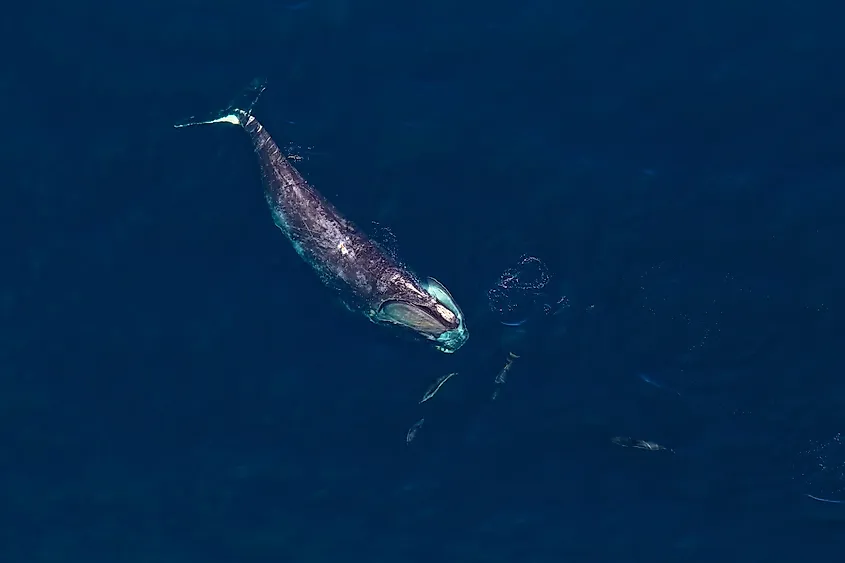
Both aquatic life-form and a mammal, the North Atlantic Right Whale, Eubalaena glacialis, is one of the many "Critically Imperiled" species of South Carolina. Much is still unknown about this species of whale. Some migratory patterns have been studied for these particular whales between the southeastern coast of the United States, up towards New England, and then towards the Bay of Fundy, but it seems there are still undiscovered areas where they may stop to feed or take care of their young.
Due to the whaling industry in the U.S. from the 1600s to the early 1900s, many species of whales are on endangered lists. The North Atlantic Right Whales tend to prefer coastal and shelf waters that provide shelter, food, and security – especially for females caring for young or avoiding male mating advances. During colder months, the whales head to warmer waters near southern Georgia and northern Florida, particularly to give birth or care for offspring. They can be found near the South Carolina coastline during winter months, where they have been designated as an Endangered Species.
Whether you're passing through the state and are fascinated by the creatures you come across along the way or want to get to know your home fauna better, learning about local endangered species is always a great place to get started. There is more to see in South Carolina than simply the various ecosystems in place, however. Don't forget to visit the beaches and the historic plantation house (and garden) museums. You'll see plenty of local native plants and birds flitting around, and you'll learn something in the process, not to mention admiring the architecture of these southern mansions. There's never a better time than the present for planning your next trip!











